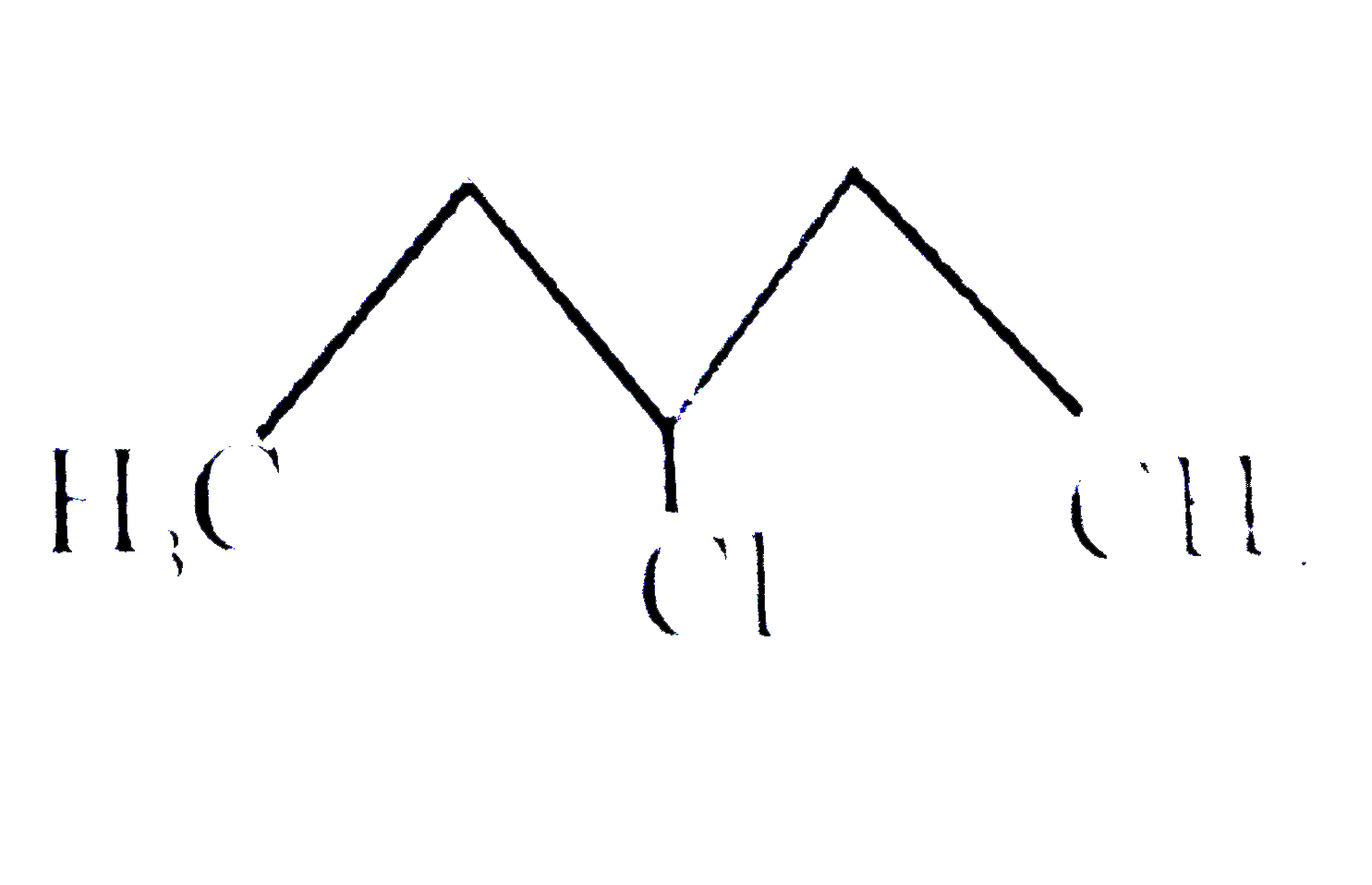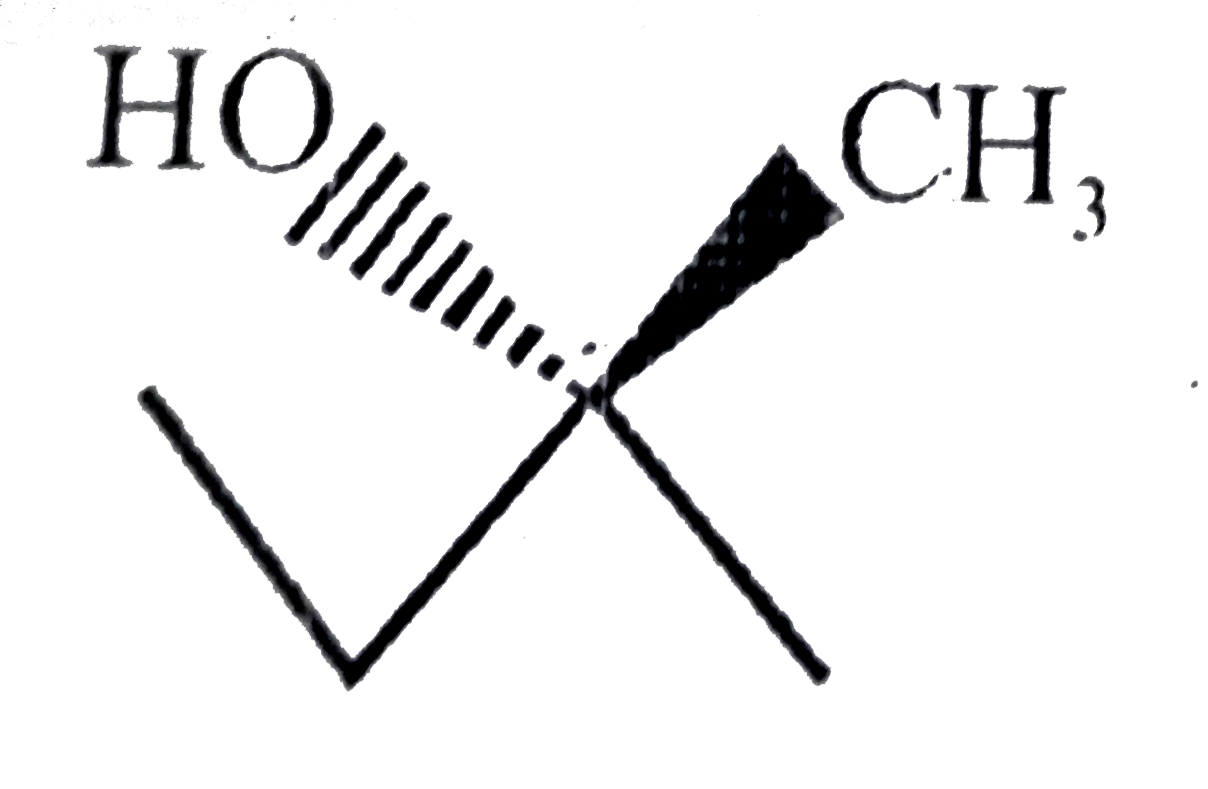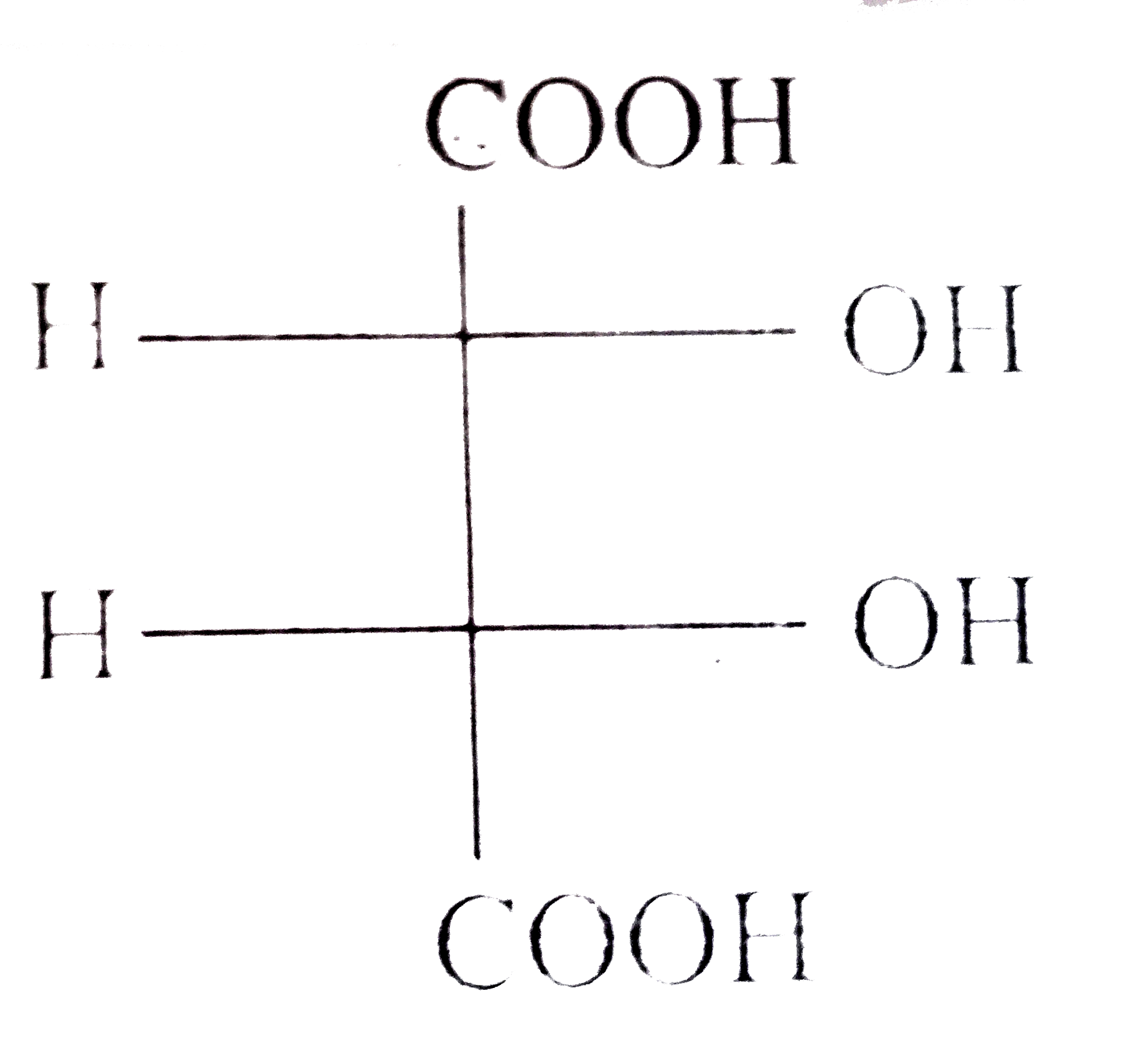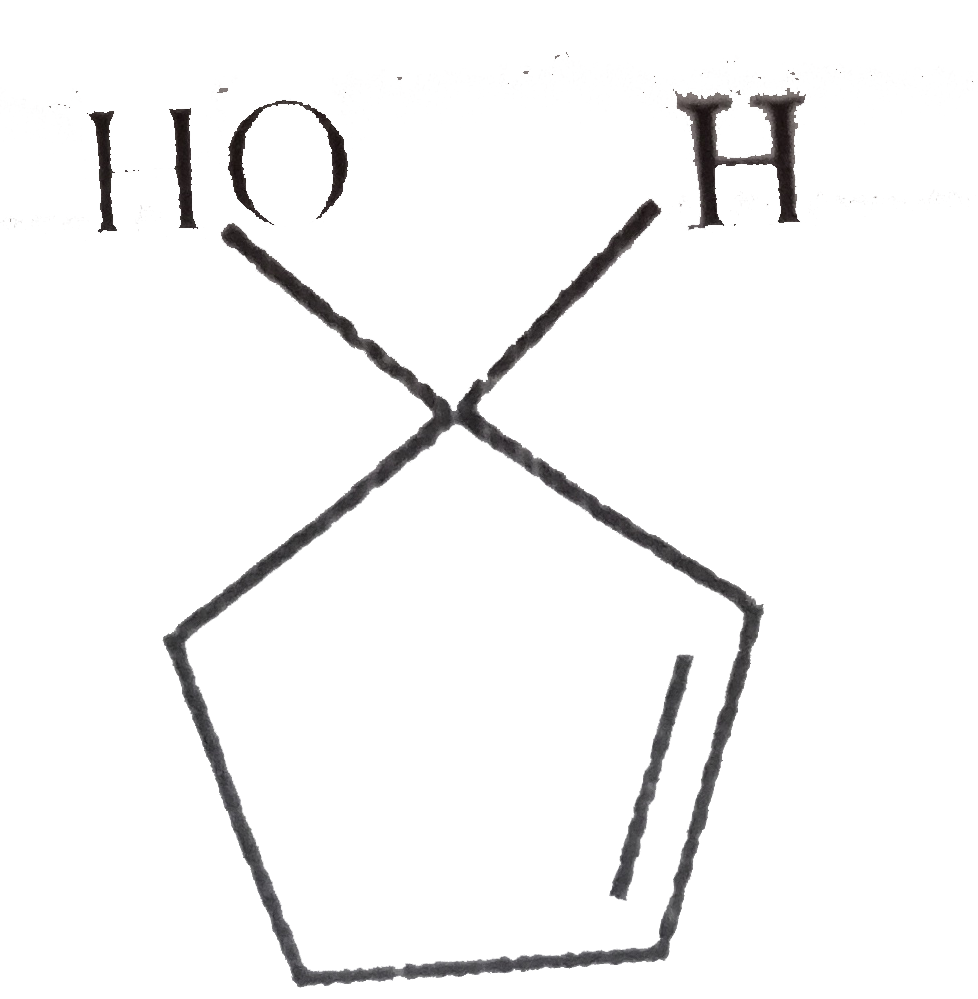Which is a optically active compound ?
Butan-2-ol
Isopropyl chloride
Neopentyl alcohol
Tertiary butyl alcohol
The correct Answer is:A
To determine which of the given compounds is optically active, we need to identify if any of them contain a chiral carbon atom. A chiral carbon atom is one that is bonded to four different groups.
1. Identify the Compounds: We have four compounds to analyze:
- Option A: Butane-2-ol
- Option B: Isopropyl chloride
- Option C: Neopentyl alcohol
- Option D: Tertiary butyl alcohol
2. Analyze Option A: Butane-2-ol:
- Structure: CH3-CHOH-CH2-CH3
- The second carbon (C2) has the following groups attached:
- OH (hydroxyl group)
- CH3 (methyl group)
- CH2 (ethyl group)
- H (hydrogen)
- Since C2 is attached to four different groups, it is a chiral carbon. Therefore, butane-2-ol is optically active.
3. Analyze Option B: Isopropyl chloride:
- Structure: (CH3)2CHOCl
- The central carbon (C2) is attached to:
- Cl (chlorine)
- CH3 (methyl group)
- CH3 (methyl group)
- H (hydrogen)
- Since C2 is attached to two identical methyl groups, it is not chiral. Thus, isopropyl chloride is not optically active.
4. Analyze Option C: Neopentyl alcohol:
- Structure: (CH3)4C(OH)
- The carbon with the OH group is attached to:
- OH (hydroxyl group)
- CH3 (methyl group)
- CH3 (methyl group)
- CH3 (methyl group)
- Since this carbon is attached to three identical methyl groups, it is not chiral. Therefore, neopentyl alcohol is not optically active.
5. Analyze Option D: Tertiary butyl alcohol:
- Structure: (CH3)3COH
- The carbon with the OH group is attached to:
- OH (hydroxyl group)
- CH3 (methyl group)
- CH3 (methyl group)
- CH3 (methyl group)
- Since this carbon is attached to three identical methyl groups, it is not chiral. Thus, tertiary butyl alcohol is not optically active.
6. Conclusion:
- The only compound that is optically active is Option A: Butane-2-ol.
Final Answer:
Butane-2-ol is the optically active compound.
- Option A: Butane-2-ol
- Option B: Isopropyl chloride
- Option C: Neopentyl alcohol
- Option D: Tertiary butyl alcohol
- Structure: CH3-CHOH-CH2-CH3
- The second carbon (C2) has the following groups attached:
- OH (hydroxyl group)
- CH3 (methyl group)
- CH2 (ethyl group)
- H (hydrogen)
- Since C2 is attached to four different groups, it is a chiral carbon. Therefore, butane-2-ol is optically active.
- Structure: (CH3)2CHOCl
- The central carbon (C2) is attached to:
- Cl (chlorine)
- CH3 (methyl group)
- CH3 (methyl group)
- H (hydrogen)
- Since C2 is attached to two identical methyl groups, it is not chiral. Thus, isopropyl chloride is not optically active.
- Structure: (CH3)4C(OH)
- The carbon with the OH group is attached to:
- OH (hydroxyl group)
- CH3 (methyl group)
- CH3 (methyl group)
- CH3 (methyl group)
- Since this carbon is attached to three identical methyl groups, it is not chiral. Therefore, neopentyl alcohol is not optically active.
- Structure: (CH3)3COH
- The carbon with the OH group is attached to:
- OH (hydroxyl group)
- CH3 (methyl group)
- CH3 (methyl group)
- CH3 (methyl group)
- Since this carbon is attached to three identical methyl groups, it is not chiral. Thus, tertiary butyl alcohol is not optically active.
- The only compound that is optically active is Option A: Butane-2-ol.
Butane-2-ol is the optically active compound.
Topper's Solved these Questions
- BOOK - MARVEL PUBLICATIONCHAPTER - ALCOHOL,PHENOLS AND ETHERS EXERCISE - Test your Grasp : Alcohols and Phenols40videos
ALCOHOL,PHENOLS AND ETHERS
- BOOK - MARVEL PUBLICATIONCHAPTER - ALCOHOL,PHENOLS AND ETHERS EXERCISE - Test your Grasp : Ethers30videos
ALCOHOL,PHENOLS AND ETHERS
- BOOK - MARVEL PUBLICATIONCHAPTER - ALDEHYDES,KETONES AND CARBOXYLIC ACIDSEXERCISE - CARBOXYLIC ACIDS198videos
ALDEHYDES,KETONES AND CARBOXYLIC ACIDS
Similar Questions
Knowledge Check
- Question 1 - Select One
An optically active compound
A(a) Rotates the plane polarised lightB(b) Changing the direction of polarised lightC(c) Do not allow plane polarised light to pass throughD(d) None of the above - Question 2 - Select One
Which is optically active :-
A B
B C
C D
D
- Question 3 - Select One
Which of the following is an optically active compound ?
AButan-1-olBPropan-1-olC2-ChlorobutaneD4-Hydroxyheptane
An optically active compound is
View SolutionWhich optically active compound on reduction with LiAlH4 will give optically inactive compound?
View SolutionWhich one of the following is an optically active compound?
View SolutionWhich of the following gives an optically active compound when reacted with sodium borohydride NaBH4?
View SolutionThe optical rtation of an optically active compound is
View Solution


